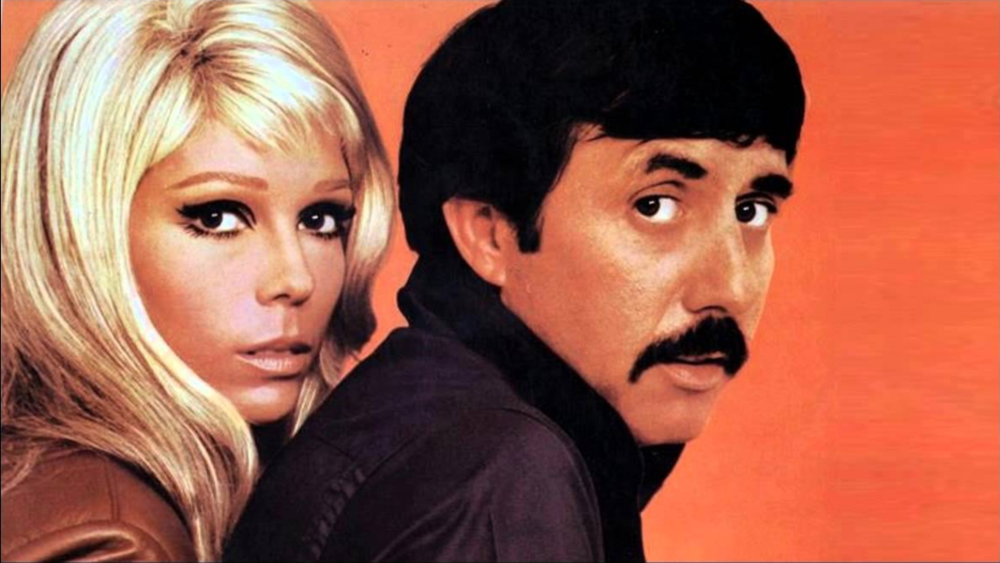
There’s a video clip you can find online which was recorded in 1967 as part of NBC’s television special, “Moving With Nancy.” A full moon sits low in a sky clouded by smoke. Strings swell, and the silhouette of a man on a horse emerges from over a cliff. He rides along a ridge and down to the bleached-out brown and blue of the Pacific in fire season. The waves come in, the time signature shifts, the film cross-fades, and Nancy Sinatra appears walking through a field. She advances through the flowers like a woman who can’t quite give herself up to nature. All white mod pantsuit and hairspray and mascara, she seems far from the flower children who, that year—the summer of love—were prophesying a future of peace and liberation and coming together. “Look at us but do not touch,” sings Nancy, crouching in the grass, “Phaedra is my name.” She is blonde and fragile and beautiful. Elsewhere in the landscape, Lee Hazlewood rides his horse along the shore. Each verse becomes unsettlingly shorter, the song progresses, but in the entire three minutes and forty seconds the two never appear in the same frame. They never come together.
This Very Special Television Presentation of “Some Velvet Morning” is a precise encapsulation of the haunting weirdness of the song that Hazlewood wrote and recorded with Sinatra in 1967. Nancy Sinatra had, until the mid-sixties, been the favorite daughter of her famous father and a mediocre pop singer without a hit. Hazlewood changed that. He wrote “These Boots Are Made For Walking” for Nancy. He wrote “Sugar Town” for Nancy. And he wrote “Some Velvet Morning,” a song that Rolling Stone, The Daily Telegraph and other publications have called one of the greatest duets ever recorded.
1967 was the year of “Some Velvet Morning” and the horse ride along the Pacific featured in NBC’s “Moving With Nancy”, brought to you by the Royal Crown Cola Company (“It’s a mad, mad, mad! mad cola”). 1967 was also the year of the Summer of Love, the crystallization of all that the 1960s promised. Better futures were in the air. The year had begun with San Francisco’s Human Be-In, where Timothy Leary had urged the crowds to “Turn on, tune in, drop out.” Peace. Love. Come Together. That was the general idea. The San Francisco Oracle issued an announcement that summed up the project of 1967: “A new concept of celebrations beneath the human underground must emerge, become conscious, and be shared, so a revolution can be formed with a renaissance of compassion, awareness, and love, and the revelation of unity for all mankind.”
Per the Oxford English Dictionary, Compassion: Suffering together with...
You have reached your article limit
Sign up for a digital subscription and continue reading all new issues, plus our entire archives, for just $1.50/month.
Already a subscriber? Sign in




